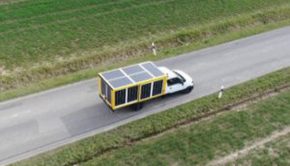Why competitive transmission should extend to low-voltage projects –
Why competitive transmission should extend to low-voltage projects –FERC Order 1000 opened higher voltage (345 kV and above) for competitive transmission. But not many projects in PJM’s expansion plan are of higher voltage. For renewable energy developers to benefit from storage as a transmission asset, the industry needs competition for lower voltage projects in PJM, and other FERC administered RTOs. Independent storage developers should be able to compete on a level playing field for storage as a transmission project, just as qualified transmission developers can bid on competitive transmission projects. FERC needs to act to keep wholesale transmission rates just and reasonable for transmission customers.
PJM background
PJM is a premier Regional Transmission Organization (RTO). As part of PJM’s RTO responsibilities, PJM puts together a forward-looking Regional Transmission Expansion Plan (RTEP). RTEP contains different kinds of transmission projects (e.g., baseline, network, and supplemental) based on the need identified. Since PJM is a large RTO, there are three sub-regional RTEP committees (see image, below):
- Mid-Atlantic, PJM “classic,”
- Southern, states like North Carolina, and
- Western, which extends to Chicago, Illinois.

Traditionally, there has not been competition for transmission assets. The incumbent Transmission Owners (TOs) build transmission projects. Even in organized markets where competitive transmission is allowed by FERC, some states still retain the Right of First Refusal (ROFR), essentially giving the state TOs the right to refuse an independent transmission project proposal from the developers. If storage was considered a transmission asset, there is a concern among developers that only incumbent transmission owners would be able to build storage assets.
Renewable project developer concerns
The role of developers is evolving with the increase in penetration of emerging technologies like energy storage. On the FERC regulated bulk electric system, renewable developers are primarily concerned about RTO generator interconnection queue timelines and costs. On average, RTO engineers take more than 500 days to conduct an interconnection study. At $4,000 per MW, a 100-MW project study request alone ties up $400,000 in developer costs.
Further, when (and if) an RTO makes an interconnection rule change, it is the developer who bears the cost of that market rule on interconnection projects. Renewable energy developers’ associations such as Solar Energy Industries Association (SEIA), American Wind Energy Association (AWEA) have been voicing concerns at FERC and ISO stakeholder committee meetings about this issue.
Small early-stage renewable project developers typically lack the resources needed for interconnection studies to follow RTO stakeholder meetings and dig into detailed transmission planning models. Developers rarely follow all the technical details behind North American Electric Reliability Corporation (NERC) standards for contingency criteria violations. Since storage can be a transmission asset, small generator interconnection developers have not only had to quickly come up to speed with storage technologies but they have also had learn how to keep the focus on any transmission upgrade discussion, including storage.
How to alleviate these concerns
Developers may be asking themselves why only higher voltage class projects are available for competition when the bulk of the costs assigned are from lower voltage projects.
Recall that PJM’s RTEP includes three types of projects: 1) baseline, 2) network and 3) supplemental. The PJM Board is the authority that approves baseline projects. A transmission project that is required because of a TO/NERC planning criteria violation is called a baseline project. If the transmission system is not able to meet the NERC transmission planning standard, a baseline project is needed.
However, among these baseline and supplemental projects in PJM’s expansion plan, lower voltages (less than 345 kV and below) are the dominant category. And, the leading cause of smaller voltage projects is NERC/PJM criteria violations. Without first taking care of these baseline projects, developers will be on the hook for additional transmission upgrades.
So, why are these lower voltage projects not going through a competitive process? If independent transmission developers were able to bid on those lower voltage projects, transmission customers and renewable project developers would be confident that they are getting the best price rather than be forced to pay whatever price the TO says is needed to complete the upgrade. Since these are FERC jurisdictional RTOs, FERC has the authority to regulate transmission projects. Hence FERC needs to open a Notice of Proposed Rulemaking (NOPR) on the competitive transmission for baseline and supplemental project types.
In conclusion
For storage to function as a transmission asset, storage developers must address at least two legitimate TO concerns. The first concern is that a storage asset is mobile and can move from place to place, which causes TOs apprehension since a line or a transformer doesn’t move once it is placed in-service. The second concern is that the storage asset needs to be available when the need arises; i.e. to prepare for outages (planned or forced). A transmission element must always be available. While these concerns are valid, none are new.
There are ample electric utilities such as Arizona Public Service (APS), Southern California Edison (SCE) and now Jacksonville Electric Authority (JEA), to name a few, who have taken steps to integrate storage into their operations. Large utilities are alleviating their concerns by writing contractual language that addresses specifics such as the storage device discharging hours duration, penalties for no availability and warranty cycle of battery cells. Renewable project developers sell their projects to these utilities.
Overall, to keep transmission rates just and reasonable, FERC should extend the competitive process to lower voltage transmission projects in order to support more renewable projects on the bulk electric system.









